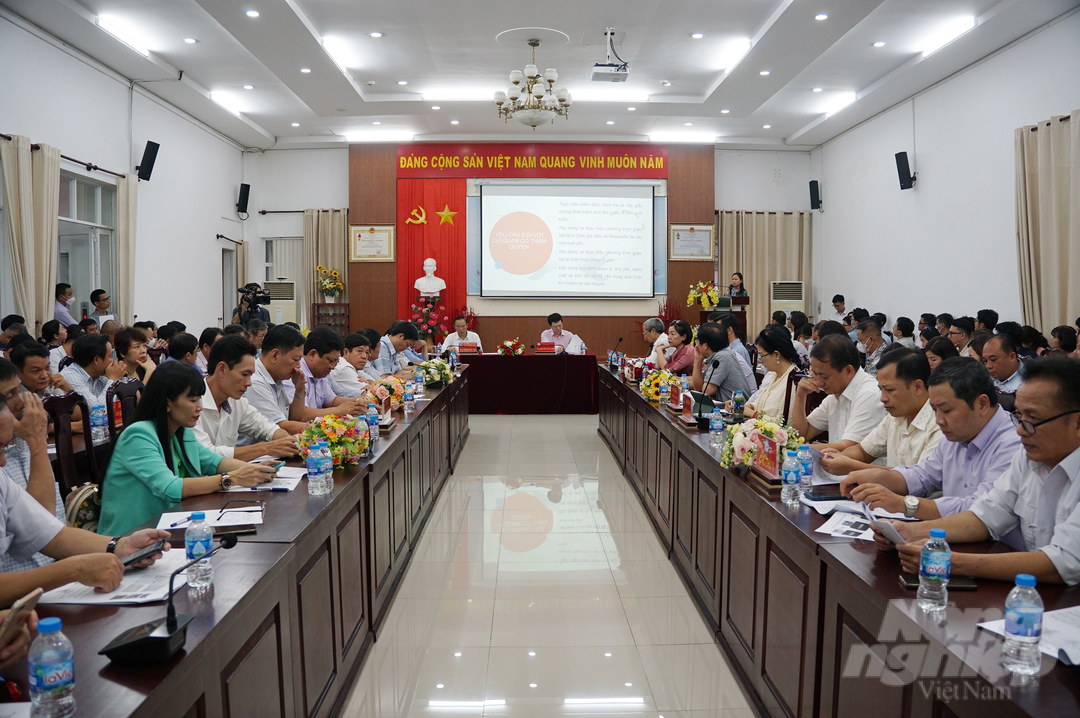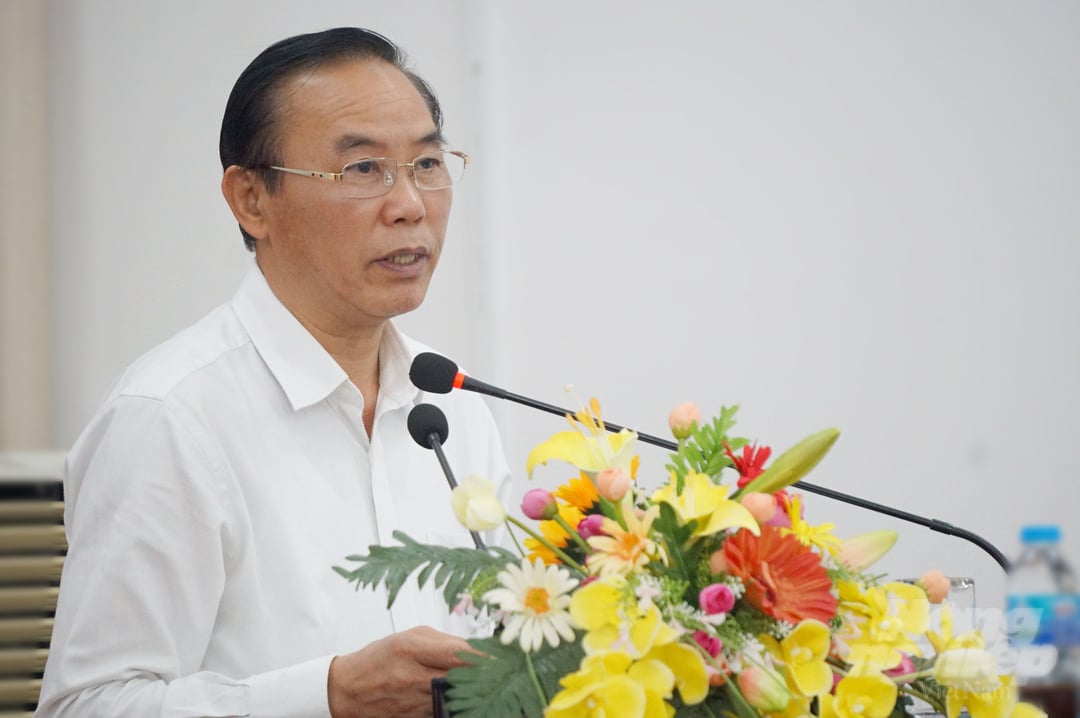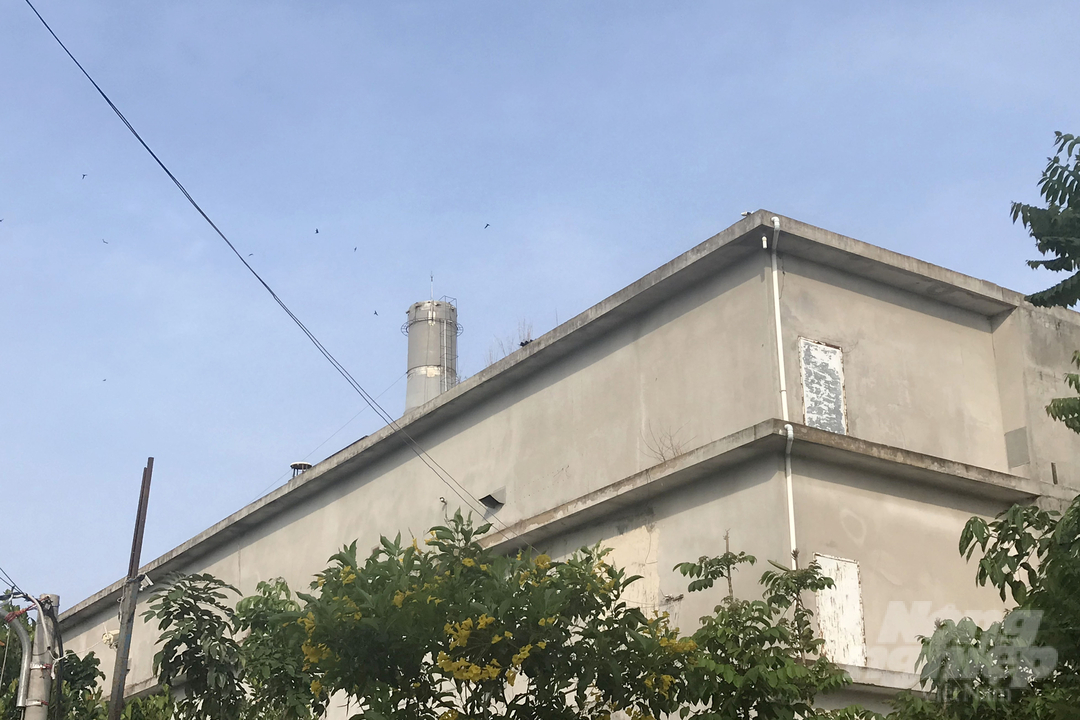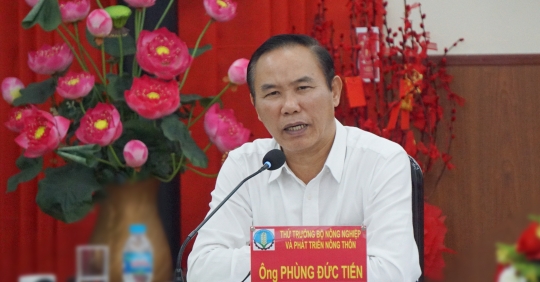
Conference on Implementation of Protocol on Quarantine, Inspection and Veterinary Sanitation for Bird’s Nest Products Exported to China. Picture: Nguyen Thuy.
On the afternoon of November 22 in Ho Chi Minh City. In Ho Chi Minh City, Deputy Minister of Agriculture and Rural Development Phung Duc Tien chaired a conference on the implementation of the protocol on quarantine, inspection and veterinary hygiene requirements for bird nest products exported to China.
According to Deputy Minister Phung Duc Tien, since 2018, the bird’s nest has been one of the products with which the Ministry of Agriculture and Rural Development focuses on negotiating and sending documents to the General Department of Customs of China to officially export to China to suggest.
After 4 years of active negotiations, the Protocol on Quarantine, Inspection and Veterinary Sanitation Requirements for Vietnamese Bird’s Nest Products Exported to China was officially signed between the China Customs Bureau and the Ministry of Industry and Commerce, Ministry of Agriculture and Rural Development. “This is a great achievement that opens up a very potential market for Vietnam’s bird nest industry,” said Deputy Minister Phung Duc Tien.
The fact that China allows the official export of bird nests from Vietnam to China creates many opportunities for the development of Vietnamese bird nest industry, ensures stable production for products, brings very high economic benefits, and creates a driving force to develop the model strongly of bird nest breeding and processing.

Deputy Minister of Agriculture and Rural Development Phung Duc Tien. Picture: Nguyen Thuy.
China is the world’s largest consumer of bird nests with about 300 tons/year and accounts for about 80% of the world market share. With the advantage of having a coastline of more than 3,260 km, a sea surface of over 1,000 million square kilometers, many islands and mountain ranges… Vietnam has great potential and is favorable for the development of aquaculture and product processing. bird nest products.
“The quality of Vietnamese bird’s nest products is considered to be superior to other countries in the region, so Vietnamese bird’s nest products are very popular with Chinese customers. This is an opportunity for the Vietnamese bird nest industry. In addition, Vietnam has a long border with China, which is very convenient in trade and transportation to the Chinese market for consuming bird’s nest products, represents a competitive advantage for Vietnamese bird’s nest products compared to other countries,” said Deputy Minister Phung Duc Tien.
“Vietnam’s swiftlets are developing very rapidly, according to statistics, there were only 7,000 swiftlet houses in 2017, but so far there have been about 30,000 swiftlet houses and some provinces have increased fivefold after 5 years,” said Deputy Minister Phung Duc Tien.
The signing of the protocol is an important and official step in the process of negotiating the official export of bird nests to China, but in order to export bird nest products to the Chinese market soon, Deputy Minister Phung Duc Tien said that state administrative bodies as well as enterprises still need many Complete procedures and organize the implementation of the requirements set out in the protocol.

Bird’s Nest House in Can Gio District, City. HCM. Picture: thanh son
Vice Minister Tien also suggested that the Ministry of Animal Health should continue exchanges and negotiations to unify the form of quarantine certificate for export of bird nest products from Vietnam to China. Professional agencies will guide and coordinate closely with the sites, rearing, processing and nesting facilities to rapidly establish and organize Newcastle disease surveillance for swifts and food safety surveillance of bird nest products as required by the protocol.
Oat production in Vietnam is estimated at around 200 tons/year. In the long term, communities must have a strategy and plan to develop Vietnamese bird nest industry with sustainable responsibility, ensure preservation of Vietnamese bird nest brand, and meet the needs of China and potential markets.
To help companies proactively prepare to meet China’s requirements for exported bird’s nest products, the Ministry of Agriculture and Rural Development organized a conference to disseminate the contents of the protocol to all provinces and cities, which are responsible for business and trade in bird’s nest products.
Earlier on Nov. 10, the Ministry of Agriculture and Rural Development received an express message from the Vietnamese Embassy in China that the General Department of Customs of China had signed the protocol to export Vietnamese bird nests to China. On November 16, Minister of Agriculture and Rural Development Le Minh Hoan also officially approved the contents of the protocol on the official export of bird nests to China.

